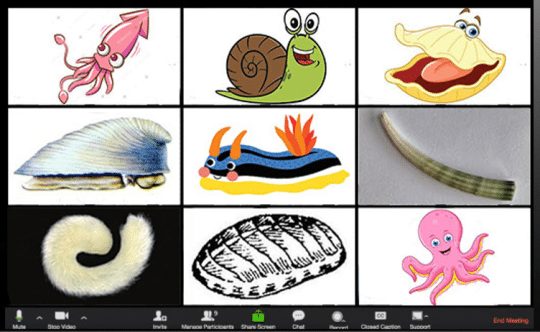
During two days in mid-July the American Malacological Society (AMS) held its 86th annual meeting over Zoom because of COVID-19 concerns. The occasion marked the first time the organization, whose members study mollusks, convened the gathering virtually. Attendance was greater than recent in-person AMS meetings, perhaps because of the low cost of the event (no travel or accommodation costs) and its appeal to people who shun air travel for its immense carbon footprint. There were more than 150 participants, 49 formal presentations, and 18 posters. Remarkably, thirteen presentations were by students.
As usual I enjoyed hearing about my colleagues’ research, rejuvenating old friendships and making new ones, and simply talking with people who already know that mollusks are vitally important. One surprising piece of information I learned from colleagues is that Carnegie Museums of Pittsburgh are ahead of other museums (e.g., Field Museum, University of Florida Museum) in re-opening to the public. Bravo to CMP!
The talk I presented summarized a publication I co-authored with Heather Hulton Van Tassel, Assistant Director of Science and Research at CMNH. The presentation, titled Is acid precipitation a factor in the decline of the terrestrial tiger snail, Anguispira alternata, in northeastern North America?, “was well-received and elicited some insightful questions. You can hear a 12-minute recording of the talk here:
Current plans are to hold next year’s AMS meeting in Nova Scotia, but if the COVID-19 virus remains a threat, and with the successful outcome of this year’s meeting, we might gather virtually.
Timothy A. Pearce, PhD, is the head of the mollusks section at Carnegie Museum of Natural History. Museum employees are encouraged to blog about their unique experiences and knowledge gained from working at the museum.
Related Content
Ask a Scientist: What is the biggest snail?
